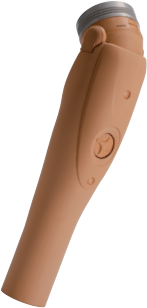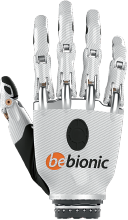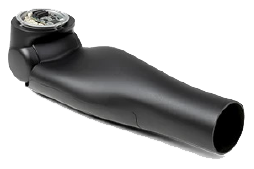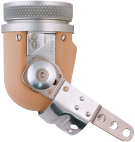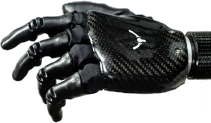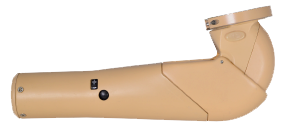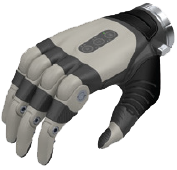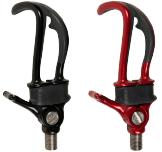
Following your amputation surgery, your primary focus should be on recovery and healing. The rehabilitation process plays a crucial role during this period. Collaborating with your rehab team, you’ll work on rebuilding your strength, taking proper care of your residual limb, and starting the journey toward being fit and using an upper extremity prosthesis.
Rehabilitation typically begins as soon as possible after your surgery and lasts about six months. During this time, your team will develop a comprehensive plan aimed at healing your residual limb and preparing you for a prosthesis. Additionally, you will need to get ready for daily life with your new upper limb difference. This will include physical and occupational therapy. Peer support is also encouraged.
Here are some key steps in the rehabilitation process to consider. Remember, everyone’s journey is unique, and your rehab team will guide you on which activities are most beneficial for you.
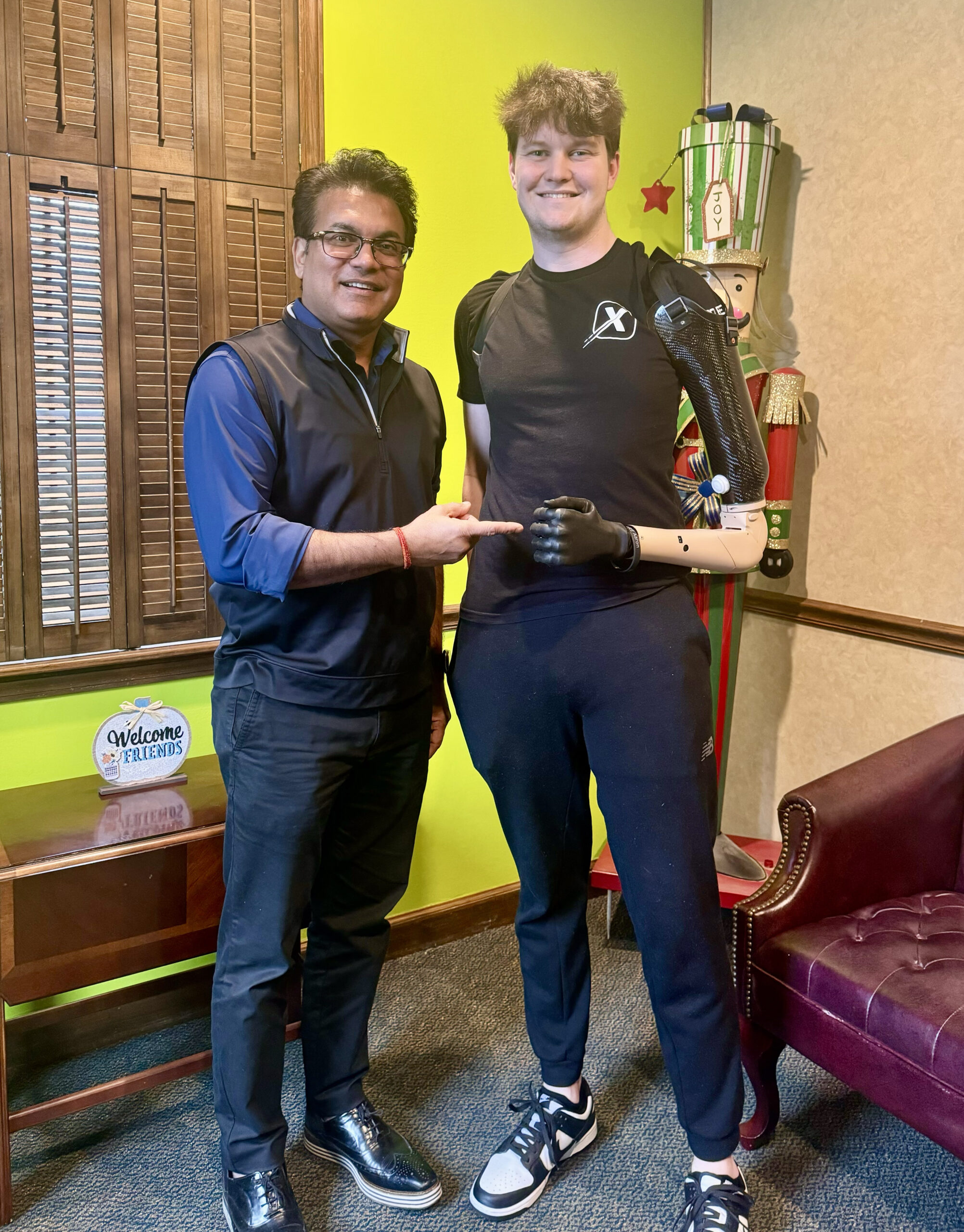
Usually referred to as an “AE” or above elbow prosthesis, a transhumeral artificial limb will replace an arm that is missing above the elbow. Since joints like the elbow require complex movements, your prosthesis will face the challenge of mimicking the correct motion. That also means greater muscle control and coordination may be required for its operation.
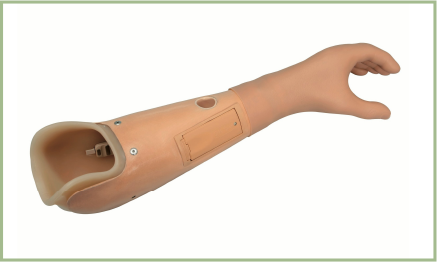
A transradial prosthetic arm is usually referred to as a “BE” or below elbow prosthesis. This is an artificial limb that is fit to a person missing their limb below the elbow. The two main types of prostheses available are cable operated limbs and myoelectric arms. The cable operated ones work by attaching a harness and cable around the opposite shoulder. Myoelectric arms work by sensing (via electrodes) when the muscles in the upper arm move. This will cause the artificial hand to open or close.
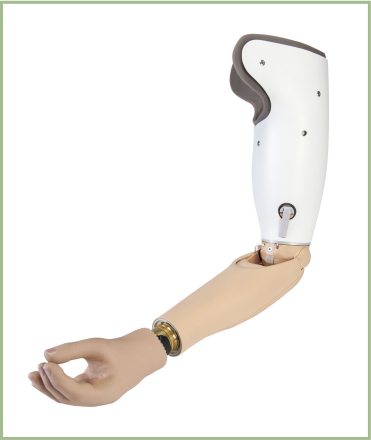
Myoelectric technology in upper limb prostheses offers reduced energy for the user, less harnessing, strength with less effort, and natural movements. Myoelectric devices utilize motors and batteries to facilitate movement, controlled by electrical signals which are generated by the muscles in the residual limb. When these muscles contract, they emit an electrical signal. In prosthetic devices, electrodes placed inside the socket detect these muscle signals and send them to a controller, this initiates movement based on the user’s intentions. For example, squeezing the muscles to close the hand will trigger that action in the prosthesis. Recent advancements make this process even more intuitive, allowing users to control various functions like grasping patterns, wrist rotation, and even movements in the shoulders.
The attractions of myoelectric prostheses are the sleek, “robotic” appearance of myoelectric hands when not covered by a cosmetic glove, multi-articulating hands, waterproof technologies for certain devices, heavier load options with elbows, variety of colors and materials and more.
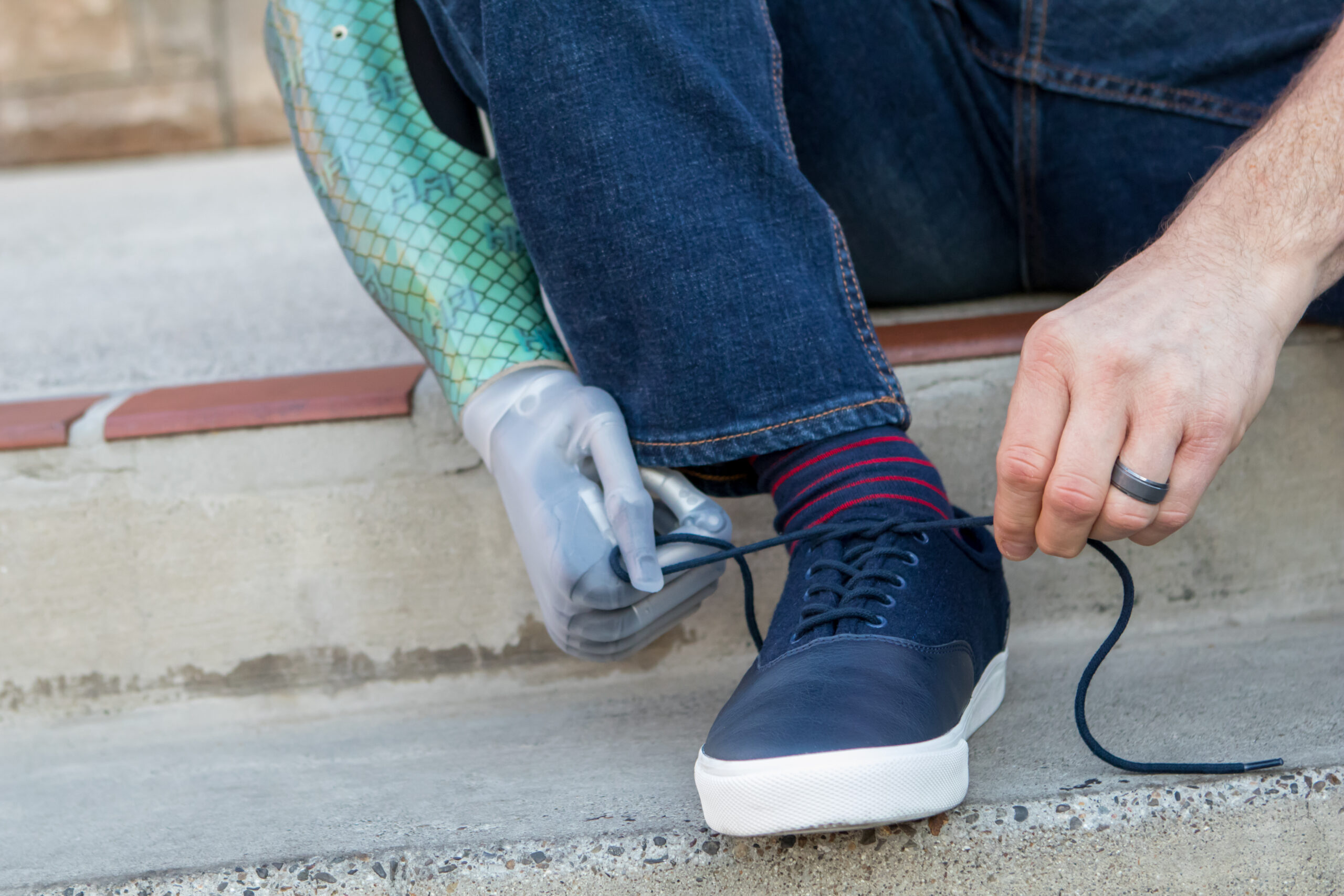
Passive hand prostheses and body-driven finger prostheses assist with daily activities but do not offer active grasp and release capabilities. Options include passive silicone restorations and positional digits, which enhance functionality. For individuals who have lost a thumb, medium-duty and heavy-duty prosthetic thumbs are available, allowing for locking positions to ensure a secure grip. Depending on personal preference, passive partial hand prostheses can be customized in various ways, ranging from unique contemporary colors and printed designs in carbon fiber, case-hardened steel and aluminum to lifelike silicone that matches the patient’s skin tone.
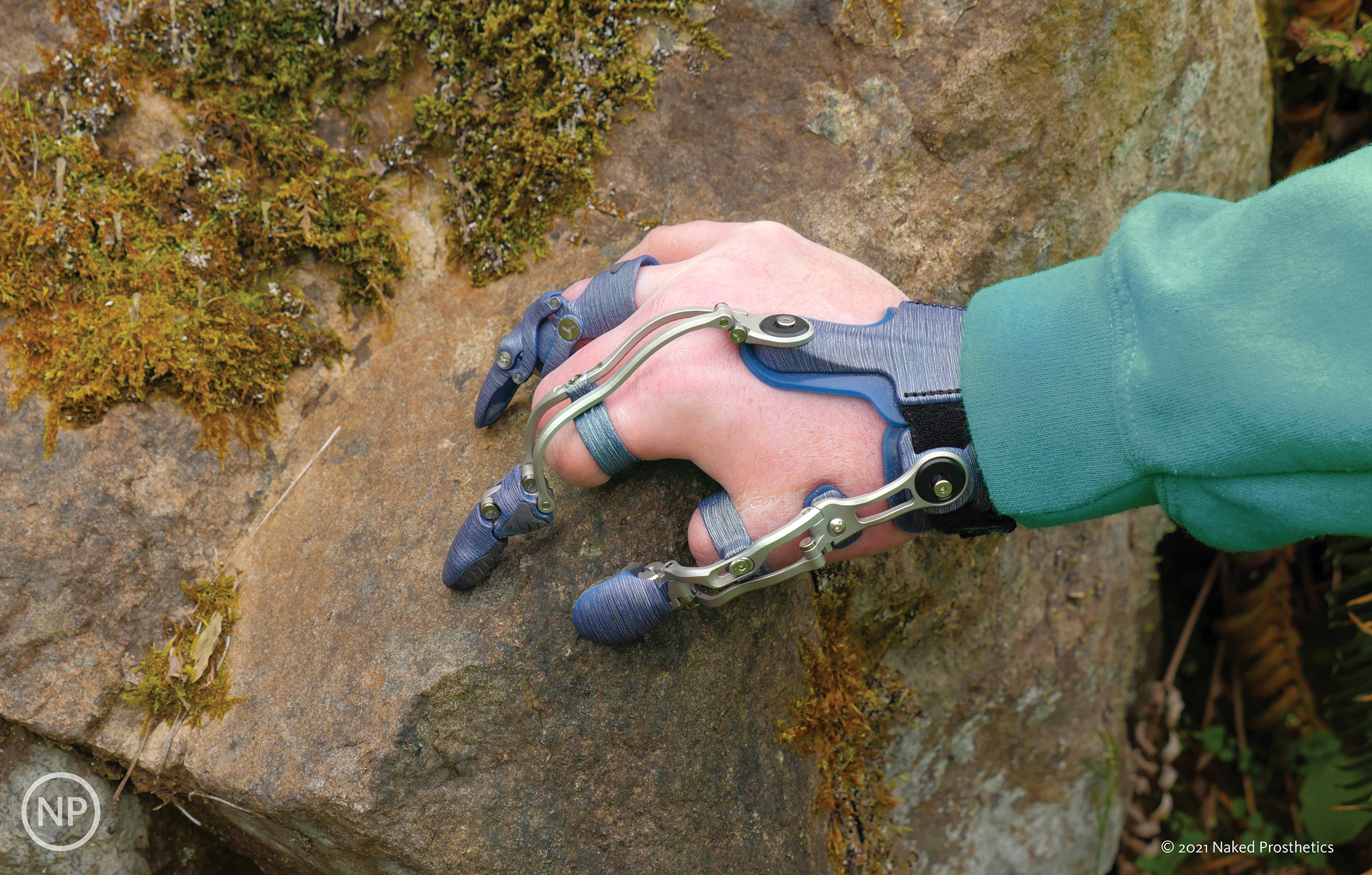
Passive prostheses are designed to replace a missing limb, they are often lightweight and cosmetic and have minimal mechanical components. In contrast to active alternatives like body-powered or myoelectric prostheses, these lightweight devices do not offer active movement, but they can enhance a person’s functionality by providing a stable surface for holding or carrying objects. Custom-painted passive silicone restorations are designed to closely match the user’s sound arm, hand, and fingers. Additionally, there are passive options available for partial hand and finger differences featuring a sleek metallic or carbon fiber look. These devices can replace up to four fingers on a single hand. Users can position these fingers by pressing the fingertips against a solid surface, allowing them to achieve the necessary degree of flexion for specific tasks or objects.
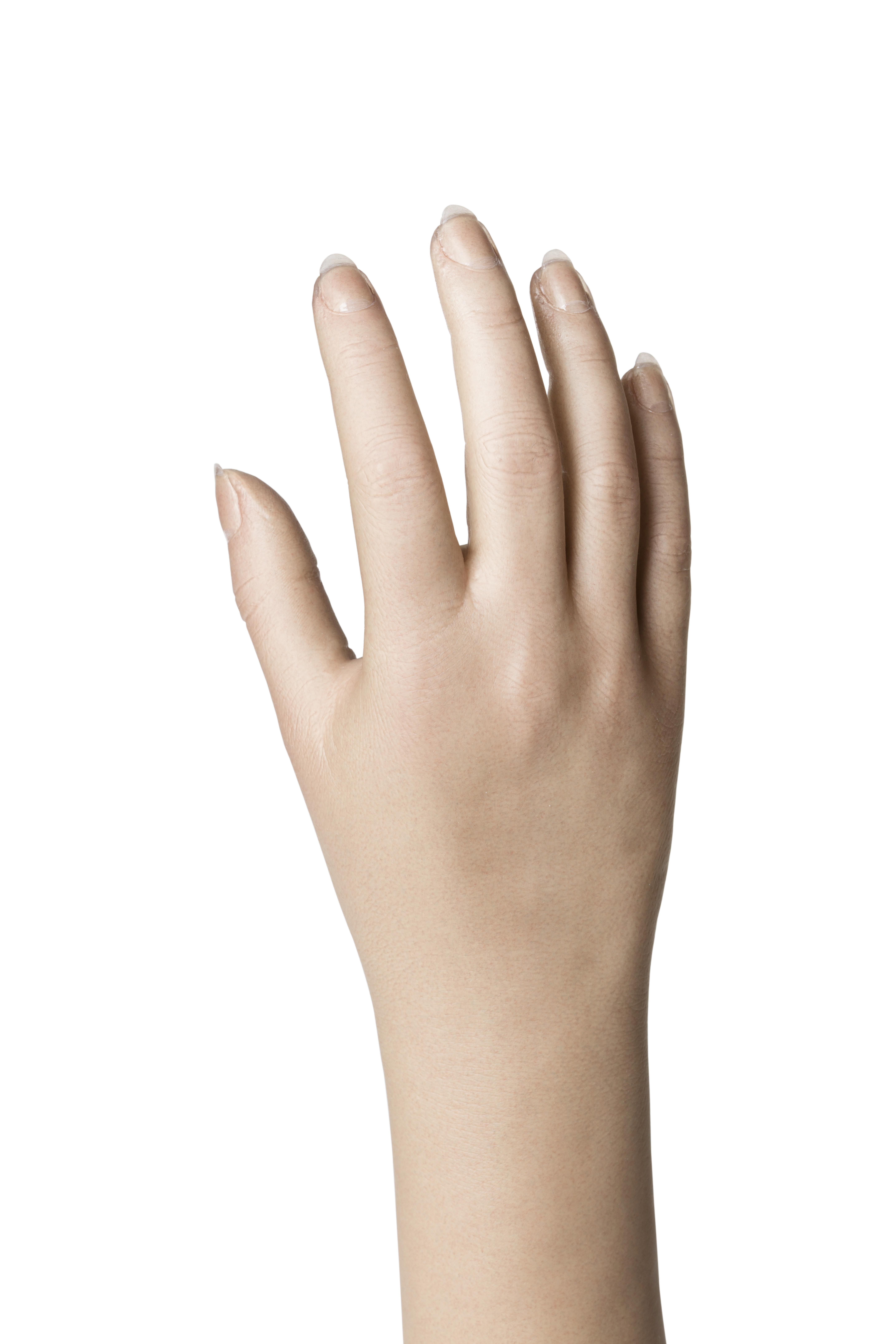
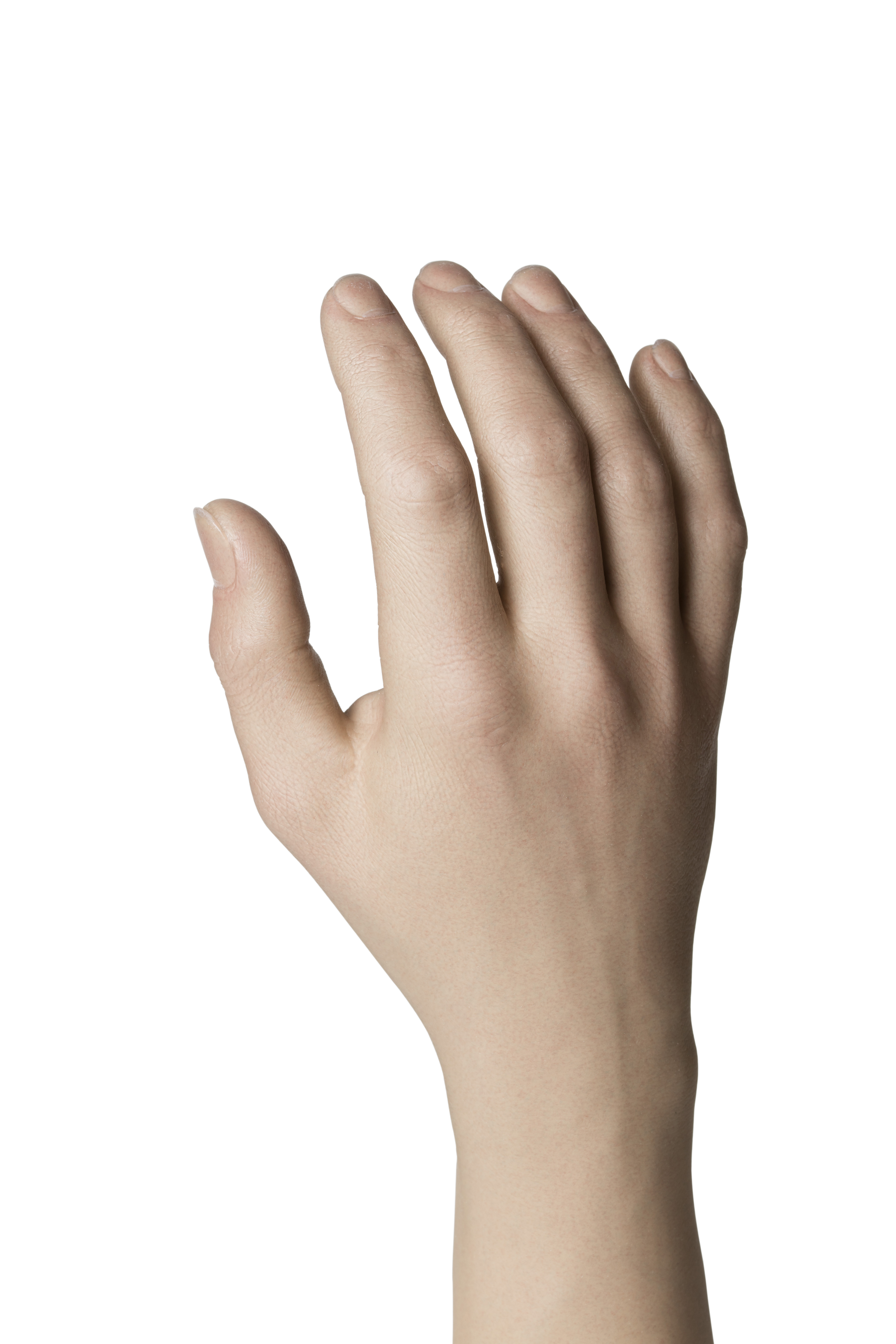
Body-powered prostheses are durable, functional and like the name –– powered by the body. The user can pick up and hold objects and assist the user’s sound hand. Body-powered prostheses are often preferred by those in heavy labor, construction, farming work or around their home. This is a more favorable choice to a myoelectric arm as they are also more cost-effective, reliable, and easy to use.
Body-powered prostheses are operated typically by a harness and cable. Movements of the upper arm, shoulder and chest move the harness transferring that motion to the cable system forcing the prosthetic hand or hook to open or close.



Passive prostheses are designed to replace a missing limb, they are often lightweight and cosmetic and have minimal mechanical components. In contrast to active alternatives like body-powered or myoelectric prostheses, these lightweight devices do not offer active movement, but they can enhance a person’s functionality by providing a stable surface for holding or carrying objects. Custom-painted passive silicone restorations are designed to closely match the user’s sound arm, hand, and fingers. Additionally, there are passive options available for partial hand and finger differences featuring a sleek metallic or carbon fiber look. These devices can replace up to four fingers on a single hand. Users can position these fingers by pressing the fingertips against a solid surface, allowing them to achieve the necessary degree of flexion for specific tasks or objects.

Passive hand prostheses and body-driven finger prostheses assist with daily activities but do not offer active grasp and release capabilities. Options include passive silicone restorations and positional digits, which enhance functionality. For individuals who have lost a thumb, medium-duty and heavy-duty prosthetic thumbs are available, allowing for locking positions to ensure a secure grip. Depending on personal preference, passive partial hand prostheses can be customized in various ways, ranging from unique contemporary colors and printed designs in carbon fiber, case-hardened steel and aluminum to lifelike silicone that matches the patient’s skin tone.

Body-powered prostheses are durable, functional and like the name –– powered by the body. The user can pick up and hold objects and assist the user’s sound hand. Body-powered prostheses are often preferred by those in heavy labor, construction, farming work or around their home. This is a more favorable choice to a myoelectric arm as they are also more cost-effective, reliable, and easy to use.
Body-powered prostheses are operated typically by a harness and cable. Movements of the upper arm, shoulder and chest move the harness transferring that motion to the cable system forcing the prosthetic hand or hook to open or close.

lorem ipsum
For more information contact Human Technology to schedule an appointment. Our skilled upper extremity prosthetic team is dedicated to offering the best solutions and experience possible.
